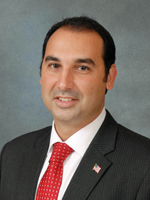Opponents of school choice often describe the recent growth of charter schools, virtual schools and private-school choice programs as a drain on public-school funding.

But there’s another side to that story. Those programs have also helped Florida’s districts absorb growth, potentially saving school districts millions of dollars in construction costs.
Districts that don’t have a lot of those options would have a new incentive to make them available under a change to a school construction bill approved this morning by a state House panel.
The revised House bill 873 would now require school districts that want to receive state funding for school buildings under a special facilities grant program to have at least 10 percent of their students enrolled in charter schools, virtual schools, or private school choice programs, such as tax credit scholarships* or McKay Scholarships for special needs students.
The special construction grants are intended to help districts with high growth and slim tax bases build new schools that they might not otherwise afford.
Rep. Mike La Rosa, R-St. Cloud, said the change would reward districts like his home county of Osceola, which are growing rapidly but have exhausted other options to keep up with the cost of growth.
“If your school district has done just about anything and everything, then it should be able to participate in these funds,” he said. “I come from a very fast-growing county, but unfortunately, our property values are just not there, so certainly it would be a benefit for Osceola County and other counties around the state.”

Rep. Joe Geller, D-Aventura, said he was worried the bill would put undue pressure on school districts to promote charter, virtual and private school choice programs.
“They talk about the carrot-and-stick approach, but if they take that carrot and they hit you over the head with it, it feels a lot like a stick,” he said. While the change would create new incentives for districts to make those options available, he said, it comes “awfully close to requiring [them] to do it, because otherwise [they] don’t get these badly needed funds for high-growth districts.”
It’s also true that some smaller districts have a paltry supply of charter and private schools, but that could be mitigated by giving students greater freedom of movement across district lines, giving them more transportation options, and growing virtual school programs.
The change was added to a larger piece of legislation that would cap district construction costs and create a new funding mechanism for charter schools.
*Step Up For Students, which publishes this blog, helps administer tax credit scholarships in Florida.


